Dmitry Kokorev. Pilot who committed one of the first rams of the Great Patriotic War
During the Great Patriotic War, Soviet pilots made more than 600 air rams, the exact number of which remains unknown. More than two thirds of them fell on the 1941-1942 year - the most terrible and difficult years of war. At the end of the fall, 1941 was even sent a circular in part of the Luftwaffe, which prohibited German pilots from approaching enemy aircraft closer than 100 meters in order to avoid air ramming. So much the Germans were afraid of this "secret weapons»Russian. In this case, the Soviet pilots used an air ram on all types of aircraft: fighters, attack aircraft, bombers, reconnaissance aircraft. Rams were committed in group and single air battles, at low and high altitudes, over their territory and over enemy territory, in all weather conditions.
On the very first day of the Great Patriotic War, in its first hours, the Soviet pilots made several air rams, demonstrating to aas Luftwaffe that they would not hesitate to risk their lives to defend the Motherland. Soviet documents confirmed 4 air ramming, which were committed on Sunday 22 June 1941. These were rammed by fighter pilots: the commander of the 46-IAP link, senior lieutenant I. I. Ivanov, the link commander of the 124-IAP junior lieutenant D. V. Kokorev, the commander of the 12 link IAP, junior lieutenant L. G. Butelin and the flight commander of the 123-IAP, senior lieutenant P. S. Ryabtsev, who, by the way, made an air ram over Brest Fortress at about 10 in the morning hours. It was this air ram that was later described by the writer Sergei Smirnov in the book “Brest Fortress”.
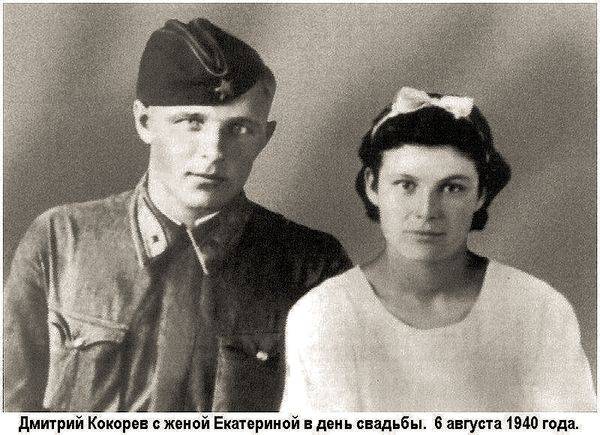
At the same time, the most interesting is the ram that was performed by Dmitry Vasilyevich Kokorev, at about 5: 15 in the morning Moscow time (4: 15 in Berlin). Information about this ram is confirmed not only by documents from the 124-IAP archive, but also by German loss data, as well as preserved memories of the crew of the downed German aircraft. This air battle took place in the area of the Vysoko-Mazowieck airfield, on which all the combat-capable units of the 124 Fighter Regiment were based.
It is worth noting that by the time the war began, Dmitry Kokorev was already quite an experienced pilot. Dmitry Vasilievich Kokorev was born in 1918 year in the village of Yuryevo, located in the Pitilinsky district of the Ryazan region. After graduating from school, he worked for a while as a mechanic at the collective farm, and then as a mechanic at the factory. Simultaneously with his work, he was trained in the flying club. Since 1937, Kokorev served in the ranks of the Red Army. In January, 1938, he entered the Perm Aviation School, which he graduated through 1,5, in July, 1939. After that, he was assigned to the 41-IAP from the 66-th IABr of the Air Force of the Belarusian Special Military District (it became known as the Western Special Military District after July 11 1940). For almost a year, right up to June 1940, Dmitry Kokorev learned all the subtleties of flying skill, being part of one of the best personnel aviation regiments in the whole district. After attending the courses of the commanders of the Kokorev units, he was transferred to the post of a flight commander of the recently formed 124-IAP, reports Mikhail Timin, one of the modern researchers in the history of the Soviet Air Force during the Great Patriotic War. Lecture This expert on the air battle that unfolded 22 June 1941, on the western borders of the USSR, you can watch on Youtube.
Like a large number of other Soviet air units formed before the war in 1940, the 124-IAP was not able to get the number of combat aircraft assigned to it in the state, so the command of this unit failed to deploy proper combat training. In total, for 1940, the 124 regiment personnel managed to fly 1938 hours 20 minutes, which averaged 20-25 hours of flight on each pilot, naturally, this did not meet even the minimum requirements, Mikhail Timin notes. In such conditions, most of the young pilots of the fighter air regiment were not able in 1940 to begin the implementation of combat training directly; they did not conduct any air battles, air shooting or bombing flights.
Spring 1941 of the year brought a regiment of change. In April, the 1941 of the air regiment was withdrawn from the 11-th IAD and transferred from the Minsk (Machulishchi) airfield to the airfield in Bialystok, where it was included in the 9-th CAD. Almost simultaneously with the redeployment itself, the personnel of the fighter regiment began rearming the newest MiG-1 and MiG-3 fighters. All this led to the fact that, as in the 1940 year, it was again not possible to deploy a full-fledged training of pilots in the spring of the year 1941. According to 1 June 1941, the pilots of the 124-IAP managed to fly in just 667 hours 32 minutes, of which 60 hours 50 minutes (195 flights) were performed on new MiG fighters, that is, less than 10 hours flying time for each 82 regiment pilots. The situation with the pilots' combat training was even worse: during 5 months of 1941, they managed to accomplish all 10 firing at ground targets (in January), and did not fire a single cone in the air.
14 May 1941 of the year in the crash, circling the MiG-3 fighter, killed one of the most experienced regiment pilots, captain G. A. Tikhonov, commander of the 4 squadron, who by that time had a raid more than 1700 hours. The situation was soon aggravated by the fact that in early June the regiment was forced to transfer its X-NUMX fighters to the newly formed 25 IAP, after transferring to the MiGs as part of the transitional fighter, only the X-NUMX X-NUMX remained. After this, combat training had to be carried out exclusively on MiG-16 aircraft. By the beginning of World War II, the 184 IAP was, in fact, a training, not a combat unit, the command staff of which was engaged in mastering the newest fighters in order to build in the future the process of retraining the rest of the flight personnel of the unit, and also to deploy a full-fledged training unit combat training.
It is worth noting that, as of 1 on June 1941, in all five western military districts there were 4727 fighters, including 77 MiG-1 (good 55 machines) and 845 MiG-3 (good 786 machines). At the same time, there were fewer trained pilots on the MiG-3 than aircraft. MiG-3 was a good aircraft, but in its role - it was a high-altitude fighter-interceptor. It reached its best performance in terms of maneuverability at an altitude of more than 6 thousands of meters, and developed its maximum speed in 640 km / h at an altitude of 7 thousands of meters. At the same time, with the beginning of World War II, it became clear that the main air battles took place at medium and low altitudes, at which the MiG-3 could no longer boast of its speed or maneuverability, which was one of the reasons for the large loss of aircraft data air battles summer-autumn 1941 year.
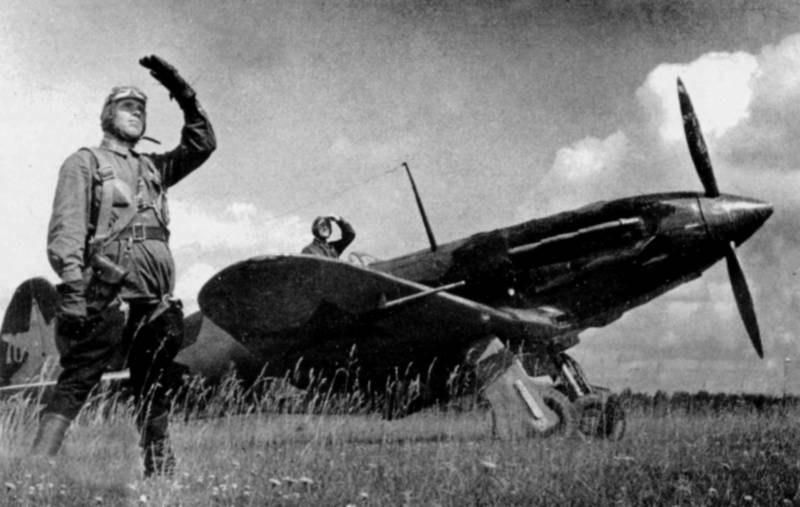
The situation was aggravated by the fact that the newest MiG-1 and MiG-3 fighters had a mass of “childhood diseases” (like any new aircraft), the machines were overloaded, and also had a heavy load on the controls, which significantly slowed down the process of mastering the aircraft. In June, 1941, to the already known difficulties with the technical condition of fighters, added serious problems with the state of their weapons. When attempting to conduct training firing, it was found that most of the synchronous machine guns on the MiG-3 fighters tritely fail, and the synchronizers themselves fail, which leads in turn to lumbago propeller blades. When 4 conducted a June 1941 survey of weapons on the regiment's 50 fighters, a production synchronizer defect was identified. As a result, the visiting team of the plant number 1, together with the technical staff of the fighter air regiment, feverishly engaged in the alteration of synchronizers and sighting of the MiG machine guns. And if we take into account the fact that 10 June 1941 of the year was followed by an order to remove the underwing machine guns of UBC from fighters, then you can imagine how threatening the situation with the combat readiness of the unit in which Kokorev served was on the threshold of one of the most terrible wars in history .
On June 22, 1941, the regiment in which Dmitry Kokorev served was located at two airfields - Vysoko Mazovetsk and Lomza. At the same time, it was in Vysoko Mazovetsk that all combat-ready units of the air regiment were stationed, which had already been re-equipped with MiG-3 fighters. In total, there were 82 pilots in the unit, 63 of whom were released on the MiG-3. Like most of the Soviet air force units located in the border districts, the 124th regiment was raised on alert at about 2 am on June 22 and was put on full combat readiness in accordance with the received Directive No. 1, but due to contradictions that existed in the text of the directive, as in most others aviation units and formations, the command of the regiment did not dare to take decisive action, preferring to wait. At about 04:20, the first enemy bombers raid was made at the Wysoko Mazowiecka airfield. According to the surviving documents of the regiment, in total in this raid (most likely there were two of them at once: at 04:20 and 04:55) 16 Ju-88 bombers and 14 Me-110 twin-engine fighters took part. However, not having sufficient experience in identifying enemy aircraft, the Soviet pilots made a mistake - the raid was carried out by Do 17Z bombers from KG 2 and Bf 109E fighters from II./JG 27.
After the first bombs dropped, Soviet aircraft began to fly into the air. In total, with 04: 30 to 05: 10, 28 MiG-3 fighters from the 124-IAP were taken off by several groups. In obedience to the order of the regiment command, Soviet pilots could open fire on German aircraft only in response to fire from the enemy, and it was also forbidden for pilots to fly over the border. At the same time, the German bombers were the first to open fire on Soviet fighters in no hurry, taking advantage of the proximity of the border, they preferred to retire to the adjacent territory, so the first take-off groups of the 124 th Fighter IAP did not conduct air battles. Apparently, only after a repeated raid on the airfield, which occurred in 04: 55, part of the regiment pilots already without permission from the command of the unit decided to shoot down German planes.
Judging by the extract from the combat log of the 124-IAP, which is referred to by Mikhail Timin, the flight commander Dmitry Kokorev took off as a part of dozens of MiG-3 fighters in 05: 10. The operative report for the 1 number of the regimental headquarters states that only Lieutenant Kokorev managed to attack the enemy’s planes, who eventually shot down Me-110 alone, and according to an extract from the regiment’s combat log, he shot down an enemy aircraft with a ram. After studying the reports on casualties and the history of the German bomber squadron KG 2 found out that the enemy pilots 124-IAP 22 June 1941 years were bomber crews DO 17Z from the headquarters squadron, while, according to the Germans, the air battle took place in 04: 15 on Berlin time (respectively, in 5 hours 15 minutes Moscow time).
Memories of Hans Kovnatsky, the sergeant-major fighter, who was a radio operator on the Dо 17Z-2 aircraft, have survived to this day. According to him, in 4: 15 (Berlin time) in 24 kilometers southeast of Lomza, not far from Zabruva, they were attacked by Soviet fighters. During the air battle, Hans Kovnatsky received two tangent head injuries, shortly after which the plane was shot down. Only two of the four crew members jumped out of the plane on parachutes. Two others were burned in a fallen plane. Judging by the recollections of a German radio operator from the crew of the downed bomber Dо 17Z-2, Dmitry Kokorev clearly lacked rifle training. This is not surprising, given that he had not shot for several months. Kokorev made three calls on the enemy's bomber, and only in the last attack, after shooting all the bullets, did he hit the cockpit of a German aircraft. Perhaps the pilot and gunner of the bomber during the attack were seriously injured or completely killed. Based on the available information, Dmitry Kokorev shot all the ammunition on board the aircraft for the 3 attacks, but he was not ready to let the enemy back, having made a successful air ram and returned to the departure aerodrome.
According to the preserved German data, we can confidently say that the rest of the Soviet pilots did not support Kokorev, who chased after the Dornier leaving them. Perhaps these more fired pilots understood that another one would follow the first raid on the airfield and did not decide to leave it without air cover. As a result, the MiGs 9, which remained in place, was able to prevent the next attack of a group of German planes from conducting targeted bombing. The Bf 109E fighters from 4./JG 27 participated in this attack on the airfield, and they recorded at their own expense one MiG-3 fighter shot down in aerial combat.
Taking into account these circumstances, it is very likely that it is for this reason that Dmitry Kokorev was not presented for an award, Mikhail Timin notes. Having rushed in pursuit of the bomber, he left his group and left the concealed object. Apparently, the act of a young 22-year-old pilot was regarded by the group leader as a minimum as a manifestation of boyhood. They did not want to punish the person who committed a successful air ram, but did not want to encourage him either.
As a result, one of the heroes of the first day of the war, Dmitry Vasilyevich Kokorev, did not receive the title of Hero of the Soviet Union. After the ramming, Kokorev fought with enemies in the skies of Moscow and Leningrad, made more 100 combat missions and recorded 5 downed enemy planes into his account. Unfortunately, he was killed on October 12 1941 near Leningrad, in a combat sortie, accompanied by Pe-2 bombers. At the same time, 9 of October 1941 of the year was signed a decree awarding the brave pilot with the Order of the Red Banner, including for the air ramming, which he performed in the early morning of June 22, however, the pilot did not have time to receive this award.
Information sources:
http://warspot.ru/3414-dmitriy-kokorev-geroy-22-iyunya-1941-goda
http://airaces.narod.ru/all13/kokorev.htm
http://www.ermak.in.ua/html/taran.html
http://www.airpages.ru/ru/mig3bp.shtml
Open source materials
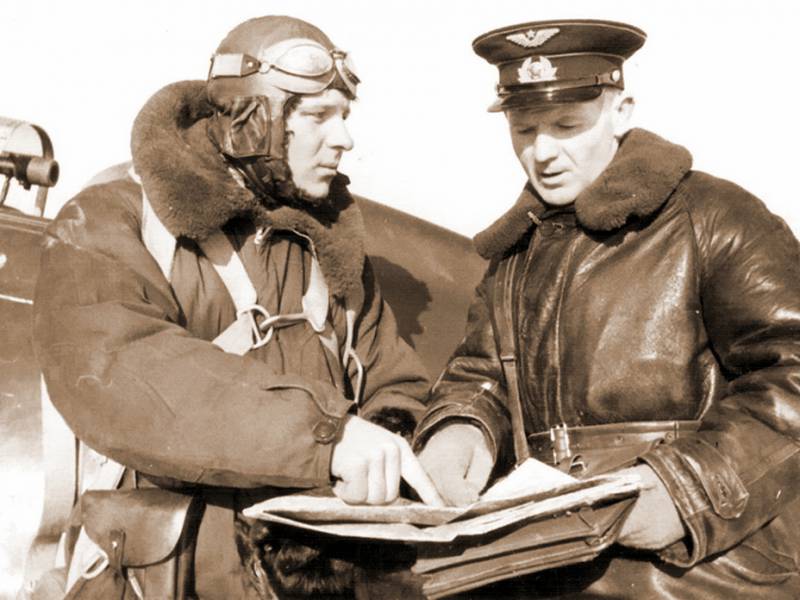
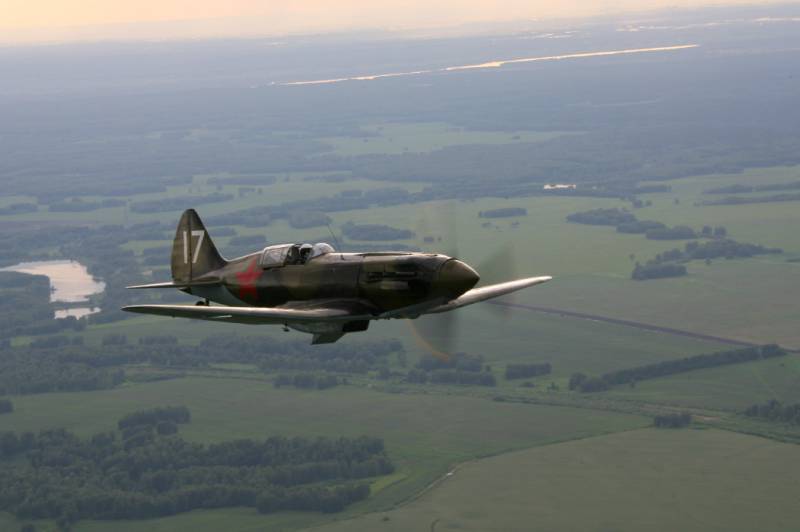
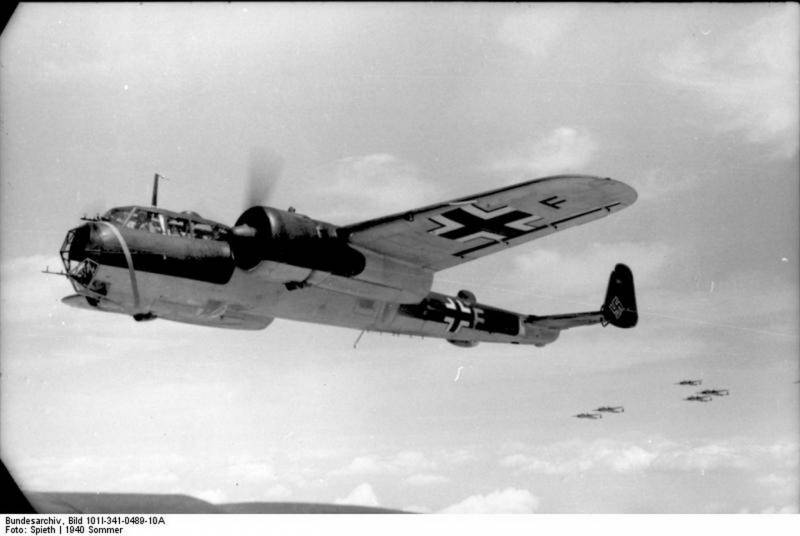
Information